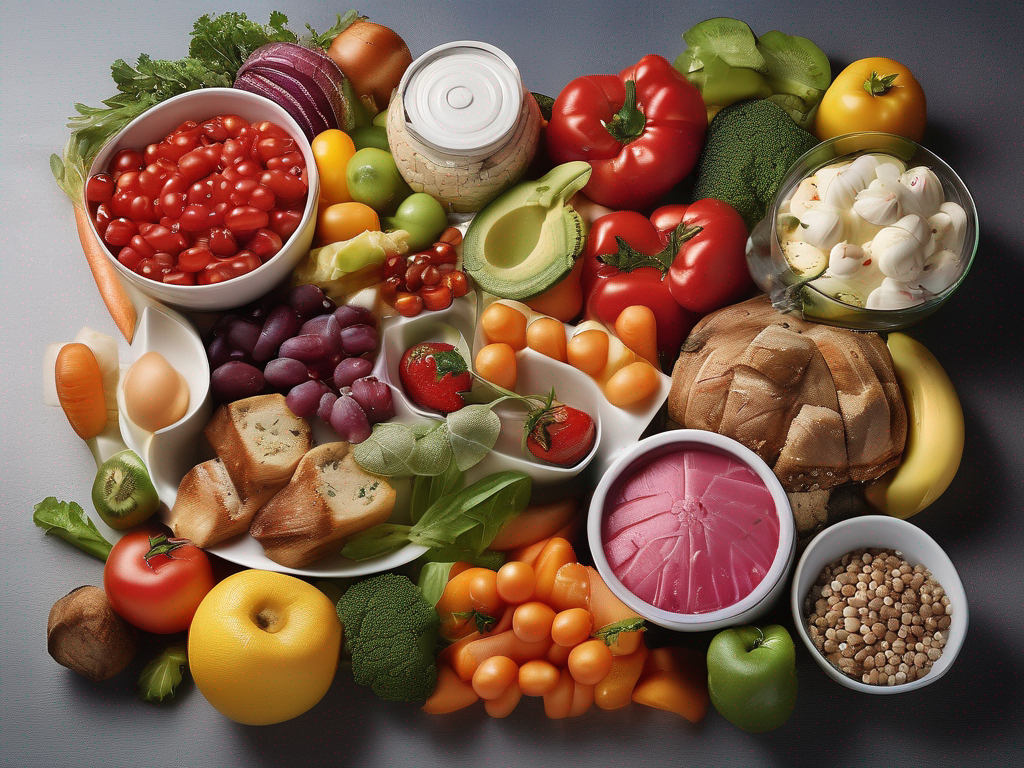
Extending the Shelf Life of Homemade Muffins: Practical Tips for Food Safety and Storage
Get Your Free Food Safety Cheat Sheet
30 most common foods with instant answers. Print it and stick it on your fridge—completely free!
Extending the Shelf Life of Homemade Muffins: Practical Tips for Food Safety and Storage
Homemade muffins are a delightful treat that can be enjoyed for breakfast, as a snack, or even as a dessert. However, due to their moisture content, muffins can quickly become stale or moldy if not stored properly. In this blog post, we will discuss how you can extend the shelf life of your homemade muffins through proper food safety practices and storage techniques.
Understanding Shelf Life and Food Safety of Muffins
When it comes to homemade muffins, the shelf life can vary depending on the ingredients used, the baking process, and how they are stored. Here are some key factors that can affect the shelf life of homemade muffins:
Ingredients and Moisture Content
- The ingredients used in the muffins, such as butter, eggs, and milk, can impact their moisture content and shelf life.
- Muffins with higher moisture content are more prone to mold growth and spoilage.
- Adding fruits or vegetables to muffins can also affect their shelf life due to the additional moisture they contribute.
Baking Process
- Proper baking techniques, including ensuring the muffins are fully cooked and cooled before storage, can help extend their shelf life.
- Overbaking can lead to dry and crumbly muffins, while underbaking can result in a shorter shelf life due to the presence of raw batter.
Storage Conditions
- How muffins are stored plays a crucial role in their freshness and longevity.
- Factors such as temperature, humidity, and exposure to air can impact the shelf life of homemade muffins.
Tips for Extending the Shelf Life of Homemade Muffins
To ensure your homemade muffins stay fresh and delicious for as long as possible, follow these practical tips for food safety and storage:
1. Proper Cooling
- Allow the muffins to cool completely at room temperature before storing them.
- Placing warm muffins in an airtight container can create condensation, leading to soggy bottoms and mold growth.
2. Airtight Containers
- Store muffins in airtight containers or resealable bags to prevent them from drying out or absorbing odors from other foods in the fridge or pantry.
- Make sure the containers are clean and dry before adding the muffins to avoid contamination.
3. Refrigeration vs. Room Temperature
- While muffins can be stored at room temperature for a few days, refrigeration can help extend their shelf life.
- Refrigerate muffins in an airtight container for up to a week to maintain freshness.
- Allow refrigerated muffins to come to room temperature or reheat them before serving for the best taste and texture.
4. Freezing Muffins
- For longer storage, muffins can be frozen for up to three months.
- Wrap individual muffins tightly in plastic wrap or aluminum foil before placing them in a freezer-safe bag or container.
- Thaw frozen muffins overnight in the refrigerator or reheat them in the oven for a freshly baked taste.
5. Monitoring Shelf Life
- Keep track of the date when the muffins were baked and stored to ensure they are consumed within a safe timeframe.
- Check for any signs of mold, unusual odors, or texture changes before eating the muffins.
Food Safety Considerations for Homemade Muffins
When it comes to food safety, especially with homemade baked goods like muffins, it's essential to follow proper guidelines to prevent foodborne illnesses. Here are some key food safety considerations to keep in mind:
1. Hygiene Practices
- Wash your hands thoroughly before and after handling food, especially when baking muffins.
- Clean and sanitize all utensils, equipment, and surfaces that come in contact with the muffin batter to prevent cross-contamination.
2. Ingredient Handling
- Use fresh, high-quality ingredients when baking muffins to ensure their safety and quality.
- Check the expiration dates of ingredients like flour, baking powder, and eggs before using them in the recipe.
3. Temperature Control
- Maintain proper oven temperatures and baking times as specified in the recipe to ensure the muffins are fully cooked.
- Store muffins at the correct temperature to prevent bacterial growth and spoilage.
4. Allergen Awareness
- Clearly label homemade muffins if they contain common allergens like nuts, dairy, or gluten.
- Store allergen-free muffins separately to prevent cross-contact and allergic reactions.
Conclusion
By following these practical tips for food safety and storage, you can extend the shelf life of your homemade muffins and enjoy them fresh and delicious for longer periods. Remember to pay attention to ingredient quality, baking techniques, and storage conditions to ensure the safety and enjoyment of your baked treats. With proper care and attention to food safety guidelines, you can savor the goodness of homemade muffins for days to come. Happy baking and safe storing!
Authoritative Food Safety References
These agencies and university labs inform every tip and health precaution we publish.
USDA FoodKeeper – Cold Storage Guidelines
Official refrigerator, freezer, and pantry timelines maintained by the U.S. Department of Agriculture.
Visit USDA FoodKeeperFDA Produce Safety Rule & Grower Guidance
Field-to-fridge handling practices that prevent contamination of fruits, vegetables, and leafy greens.
Visit FDA Produce SafetyCDC Foodborne Illness Prevention Hub
Surveillance-backed guidance on pathogens, symptoms, and steps to reduce foodborne illness risk.
Visit CDC Food SafetyUC Davis Postharvest Technology Center
University research detailing optimal storage atmospheres for produce after harvest.
Visit UC Davis PostharvestPenn State Extension – Home Food Preservation & Safety
Peer-reviewed extension bulletins on safe canning, chilling, and reheating practices.
Visit Penn State ExtensionGet Your Free Food Safety Cheat Sheet
30 most common foods with instant answers. Print it and stick it on your fridge—completely free! Want more? Upgrade to the complete guide with 70+ foods.
Scan your food directly and get instant safety info using our AI-powered camera feature.